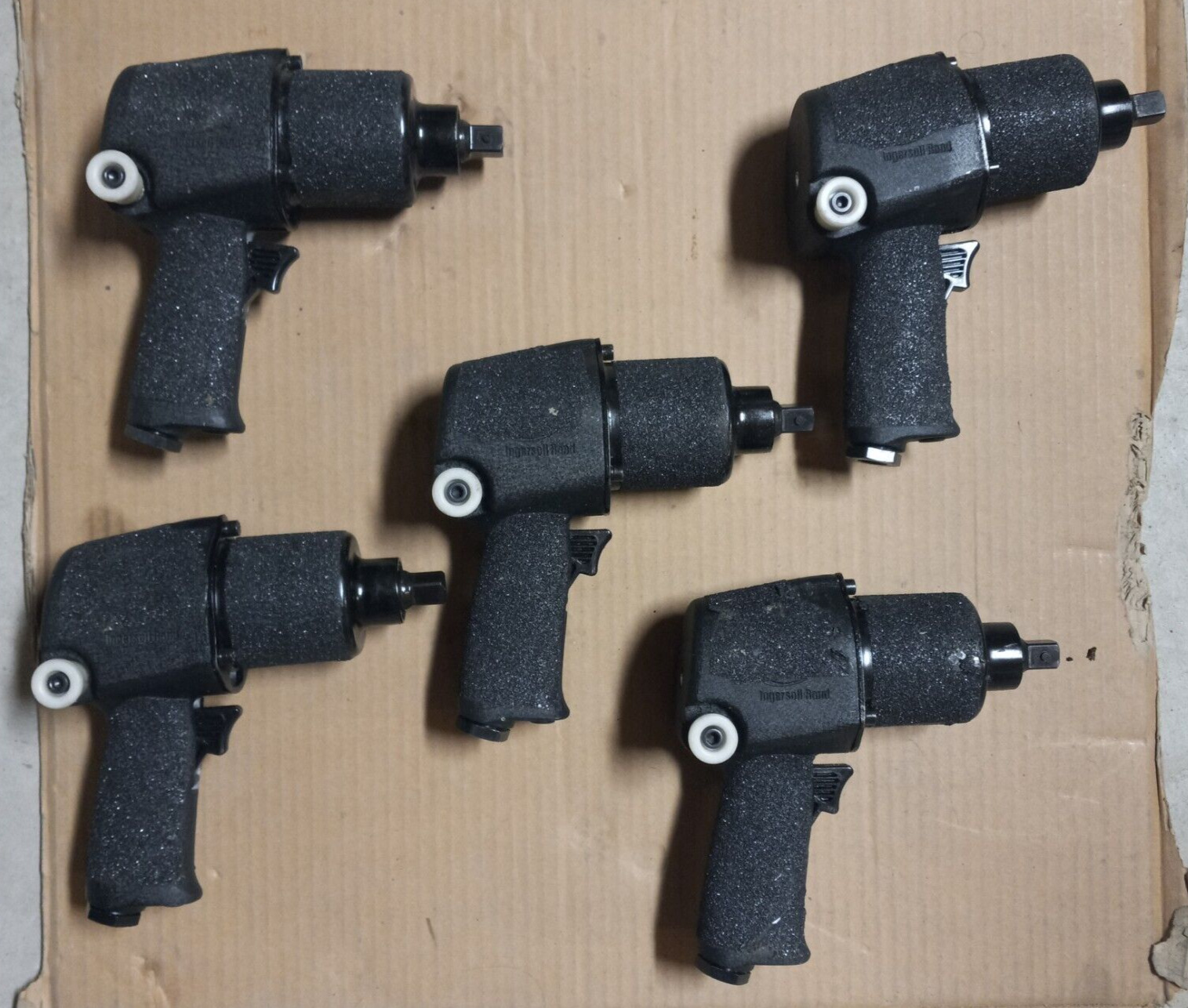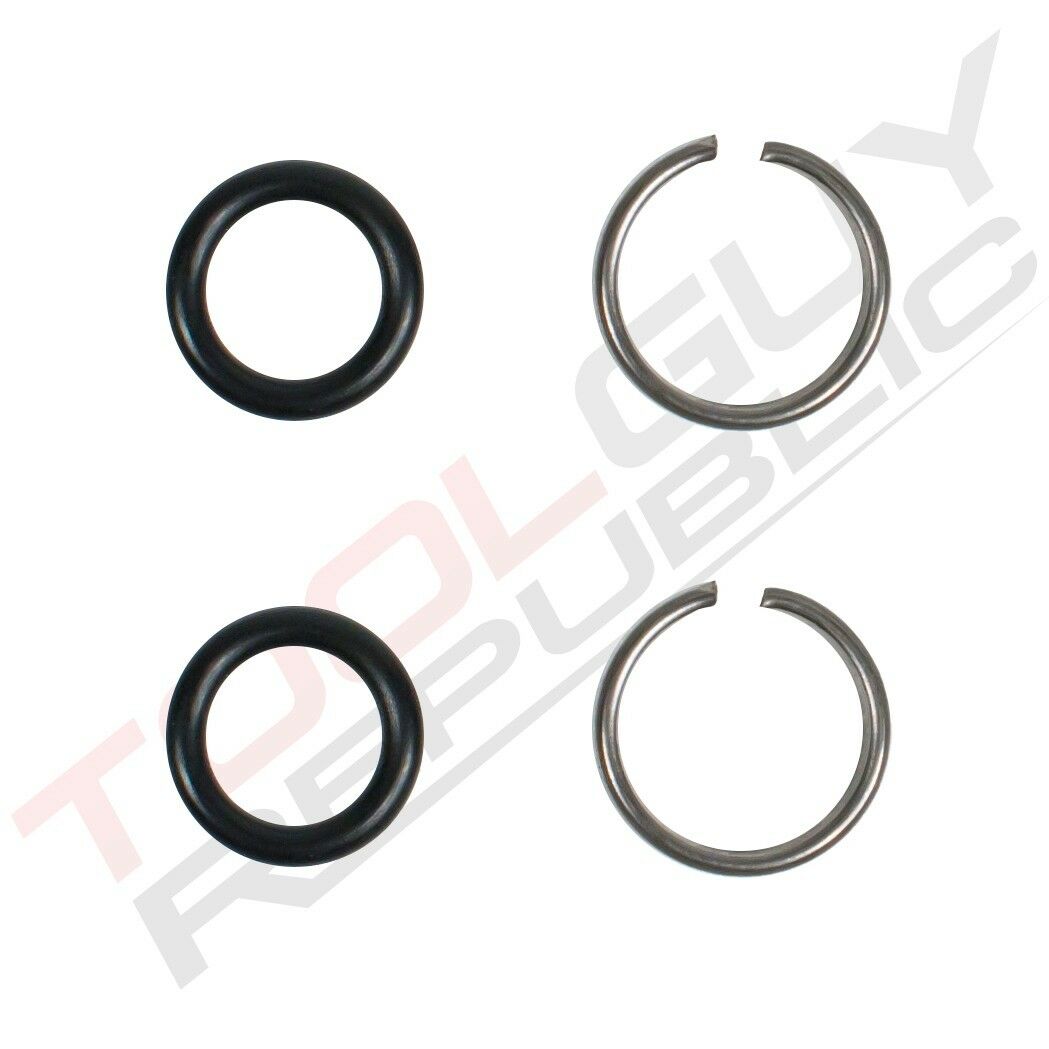-40%
INGERSOLL RAND 232TGSL THUNDERGUN REBUILT WITH NASCAR RACING PIN STYLE ANVIL
$ 58.08
- Description
- Size Guide
Description
This ebay Buy-It-Now offering provides 1 of 5 each full freshly rebuilt and fully operational Ingersoll Rand 232TGSL Thunderguns featuring: 6-vane rotors, fresh notched phenolic vanes, a fast shift knob attached to the reverse valve and standard forward exhaust. The tool housings and hammer cases are wrapped with grip tape so that mechanics gloves are required with the use of these tools. The anvils are locking pin style with a new 2-piece anvil pin kit included for each tool. These are previously used tools and rebuilt by definition of eBay seller listing requirements.ONE tool
of the
FIVE shown
above are provided with each eBay Buy-It-Now purchase. These tools will deliver all of the performance you would reasonably expect from a new 232TGSL Thundergun.
SPECIAL SERVICE NOTES APPLICABLE FOR THESE FIVE TOOLS
The phenolic material notched rotor vanes that I provide with these freshly tuned tools will perform better on tool startup than the standard IR white plastic 2131-42-6 rotor notched vanes. Ingersoll Rand provides grease fittings on many of their pneumatic tools for greasing of the rear bearing through the hollow rotor shaft and then forward into the hammer case. The grease is intended to lube the hammer frame components and rotor support bearings. I have never encouraged the external greasing of sealed impact wrenches even though this is by IR design to be done...regularly. If you are injecting grease by hand pump or with pneumatic assistance you have no idea how much grease you are putting into your tool. Too much grease will pack the hammer frame and cause the tool to perform poorly much the same way that overfilling your engine crankcase with oil can cause engine damage. I recommend periodic removal of the hammer case screws and the placement of clean wheel bearing grease brushed onto the hammer frame parts and front bearing.
The above photos showing "as received" detail conditions of the rotor end faces and front and rear end plates should draw your attention. My experience here with IR tools is that they are careless with internal endplay setup at the assembly plants in China. Rotors coming off the lathe for the rotor groove cutting process often have micro burrs on the end faces and groove edges. The burrs are not given due attention by touch up work with machinist milling stones. On the initial start up process these burrs cause the spiral "swirling patterns" on the front and rear end plates.
The normal operation of a pit crew impact wrench generates tremendous internal heat. IR plastic notched rotor vanes will melt and clog air passages when the temperature rises too high. Vanes will then: wilt, warp and bend inside the rotor grooves. I prefer phenolic vanes for this reason.
I have also found that the internal endplay setup/adjustment of most IR tools using paired air motor clamping washers is zero to excessively positive. The underlying issue causing this problem is a failure by the IR production facilities in China to properly end mill the air motor cavity in the tool housing to the depth required (about .010" too shallow) for perfect air motor location and fitment. This is a problem with the 232TGSL by OEM design. This means that the air motor has no internal clearance for moving and stationary parts to grow with heat from thermal expansion. As part of my rebuilding processes the end plates are either replaced and machined to correct thickness or machined for reuse but with careful consideration to providing negative internal endplay. This will allow for thermal expansion and linear growth of the superheated internal moving and static parts. These tools will attain higher operating rpm's faster plus the performance you need with this corrective repair.
Porting of the cylinder is not necessary with this style rotor so it was not done. Enlarging the 3-holed exhaust passages just 1/16" larger coupled with cylinder smoothing of burrs may be an option to play with but I did not do this on these tools.
Tool Warning:
The IR operating air pressure standard is 90 psi. Racing enthusiasts want to push these tools harder than designed. My experience with engineers on pressure ratings is use the 1.5 rule. 90 psi X 1.5 = 135 psi maximum operating pressure.
Operating these aluminum housing tools in higher air pressure ranges means that the handle of the tool housing could explode when safe maximum working pressures are exceeded.
Caution must be exercised here as these are cast tool aluminum tool housings and are not billet machined titanium (which can handle 300 psi nitrogen.)
The shipping weight is 8 pounds with an eBay shipping label. International buyers have this item shipped to Glendale Heights, Illinois for additional processing costs through the eBay Global Shipping Program.
















